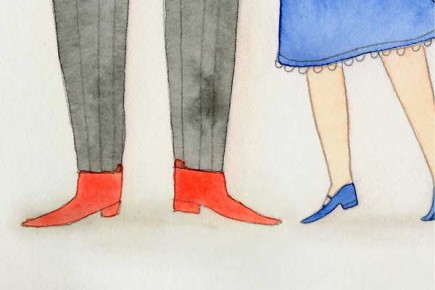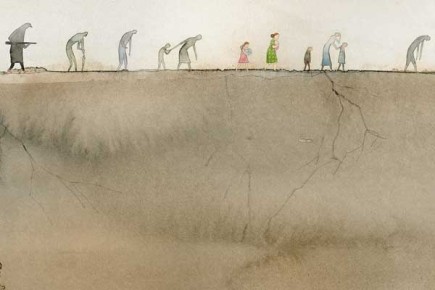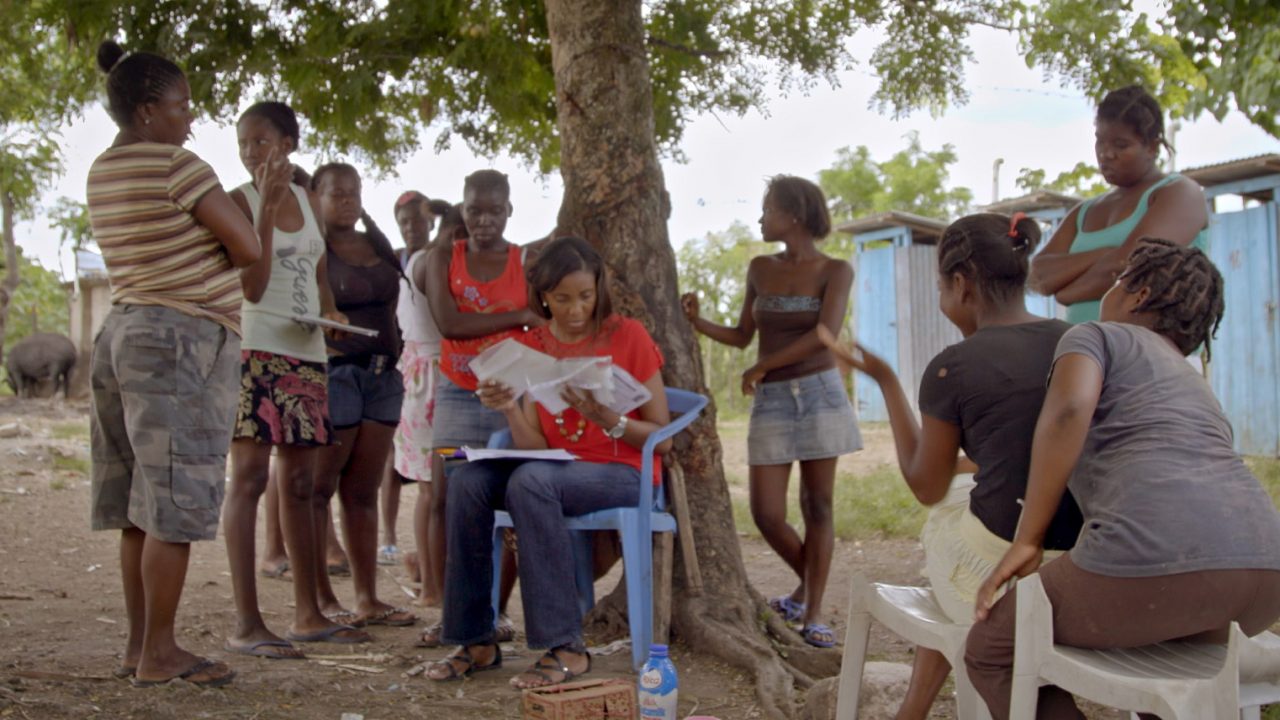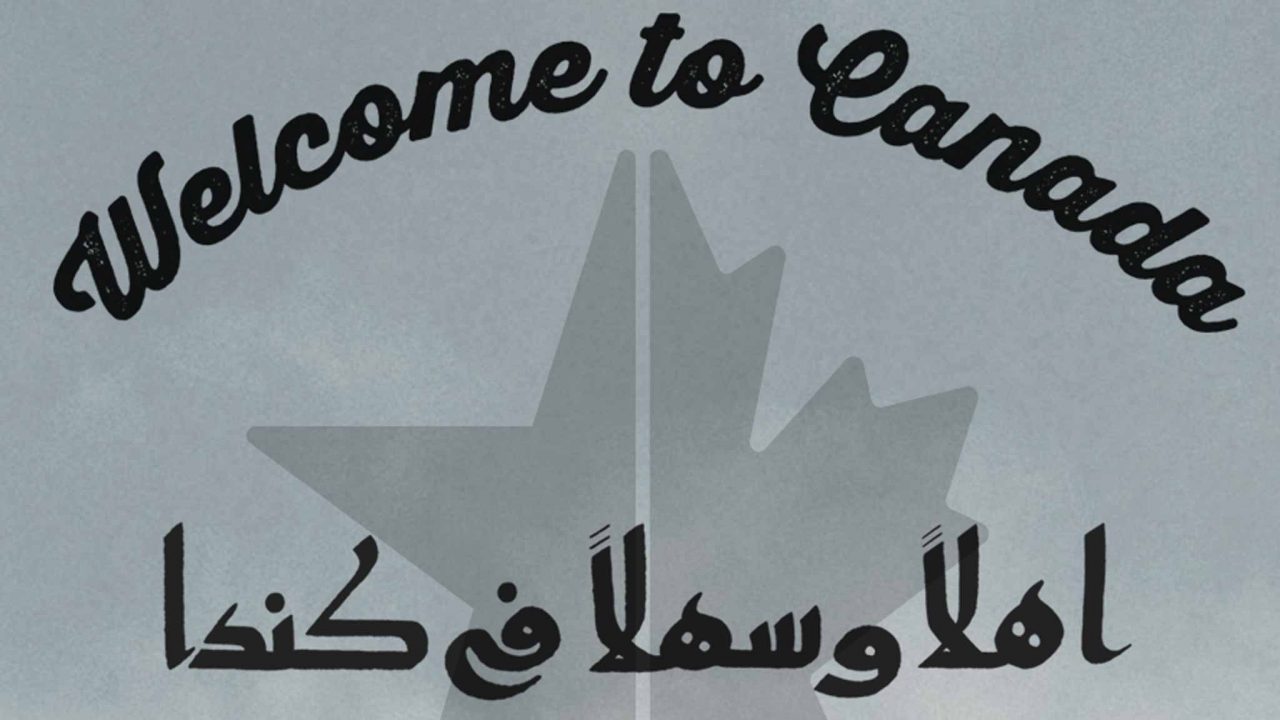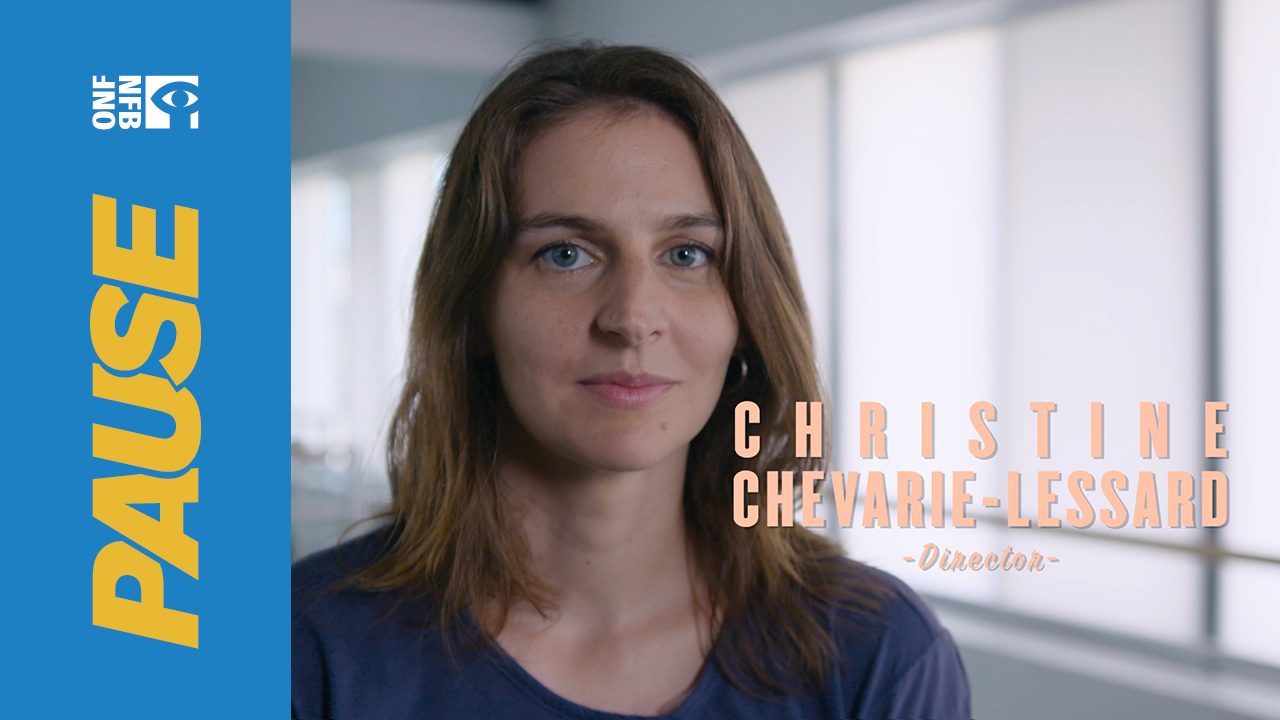
Symbols of War: Talking about Civil War with Students
Symbols of War: Talking about Civil War with Students
* This guest post was written by David Finkelstein.
Representing civil war
I was struck by the power of a recent NFB production. As images such as that of young Alan Kurdi lying on a Turkish shore flash across our screens, they serve as a reminder that we need to recognize the ravages of war. Based on the book Nul poisson où aller, written by Marie-Francine Hébert and illustrated by Janice Nadeau, No Fish Where to Go is a brilliant and heart-wrenching animated film that explores the traumatic transition experienced by one group of refugees. Two little girls, best friends forever, are wrenched apart when their village splits into factions. Janice Nadeau won a 2004 Governor General’s illustrator’s award for her work on the book. Nicola Lemay, the movie’s director, felt that it was essential to capture the characteristic tone and colour of Nadeau’s work. The film won the prestigious Japan Foundation President’s Prize that rewards an excellent work that encourages mutual understanding among nations and races or contributes to cultural exchange
One little fish
No Fish Where to Go, Nicola Lemay & Janice Nadeau, provided by the National Film Board of Canada
Some ideas can seem difficult to articulate in words, but symbols have a way of highlighting ideas so that we can intuitively understand them better. A common symbolic image throughout the history of man has been “the weight,” seen in the myth of Atlas holding up the world or even expressions such as “the old ball-and-chain.” We can all relate to the feelings of struggle these images evoke. After watching No Fish Where to Go, I can’t look at a fishbowl in the same way again. Perhaps the most important symbol in the movie, it represents the weight of the world and the significance of the refugee struggle.
Discussion questions: What makes the fishbowl such a good symbol of the struggle the little girl faces? What is the symbolic significance of the Atlas myth?
Two red shoes
Since watching the movie, I’ve also been reflecting on the symbolic significance of uniforms. In the film, we learn that the citizens wearing red shoes are beginning to segregate everyone else. When we organize ourselves by uniform, there is no debate about which side we are on. The consequences of this decision are felt in stadiums, on the battlefield, and in society at large. For instance, I have seen more Blue Jays jerseys around the city of Toronto in the last month than in the last two decades combined.
Class activity: Spend 10 minutes brainstorming different groups that wear uniforms (sports teams, soldiers, boy scouts, doctors, etc.). Then, create a line graph charting them on a line graph from the positive to negative influences they express to society. Justify your answers.
Cracks in the foundation
No Fish Where to Go also uses visual techniques to serve symbolic purposes. As the little girl’s family is rounded up, cracks appear in the frame of the image. From the viewer’s point of view, it seems as if one’s perception of the situation is being fragmented. Later, we see cracks in the earth and an old watch. Also, the animation technique used in the film makes the birdmen appear “fuzzy,” which helps to reveal their true character by symbolizing the unsettled feeling they have about their task at hand. As the refugees give up hope, they exhibit the same fuzziness.
Discussion questions: Birds are shown throughout the film for different purposes. What is the symbolic meaning of the black birds and the red and blue birds? What do you think will happen to the main character after the film is over?
Symbolic thinking is an important skill. Through this beautiful and moving story, students discover how simple objects such as birds or shoes can be used symbolically to represent civil war and learn about the lasting effects of this type of conflict.
“I love the surprises found in a new batch of CAMPUS films. The range of viewpoints and voices offered by the NFB’s productions is almost unparalleled. In the classroom, I want my students to focus on critical thinking and empathy, two essential life skills. I am an OCT-certified teacher and have developed curriculum for a number of CAMPUS films, including the Blackfish study guide and an Audio Literacy unit developed to accompany the L.A. Theatre Works collection” — David Finkelstein.
